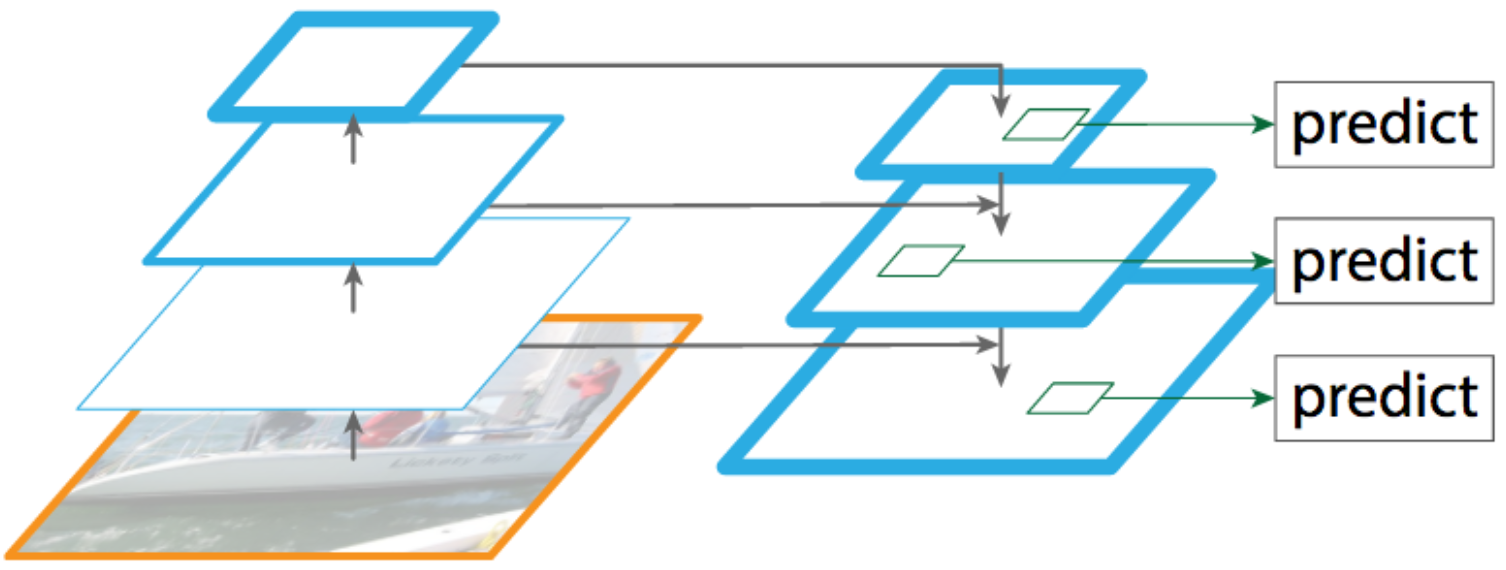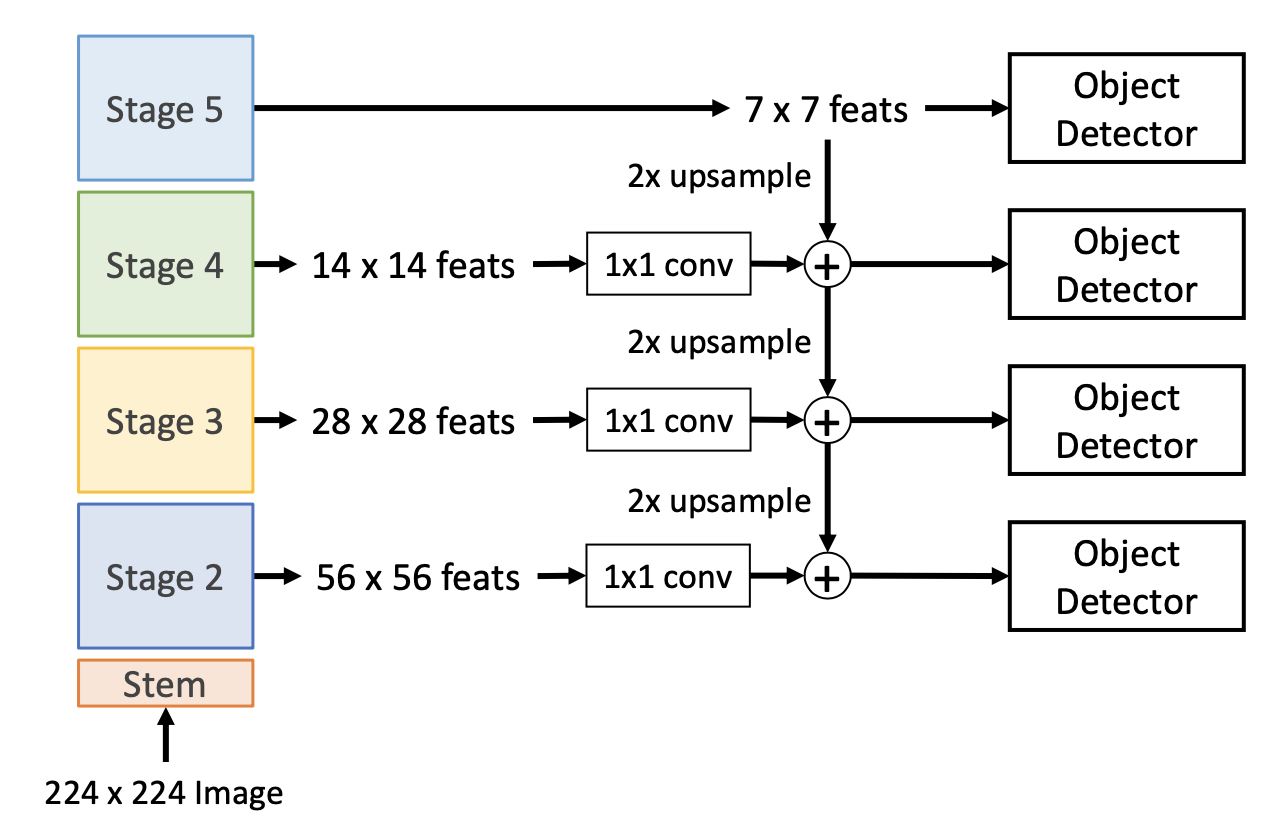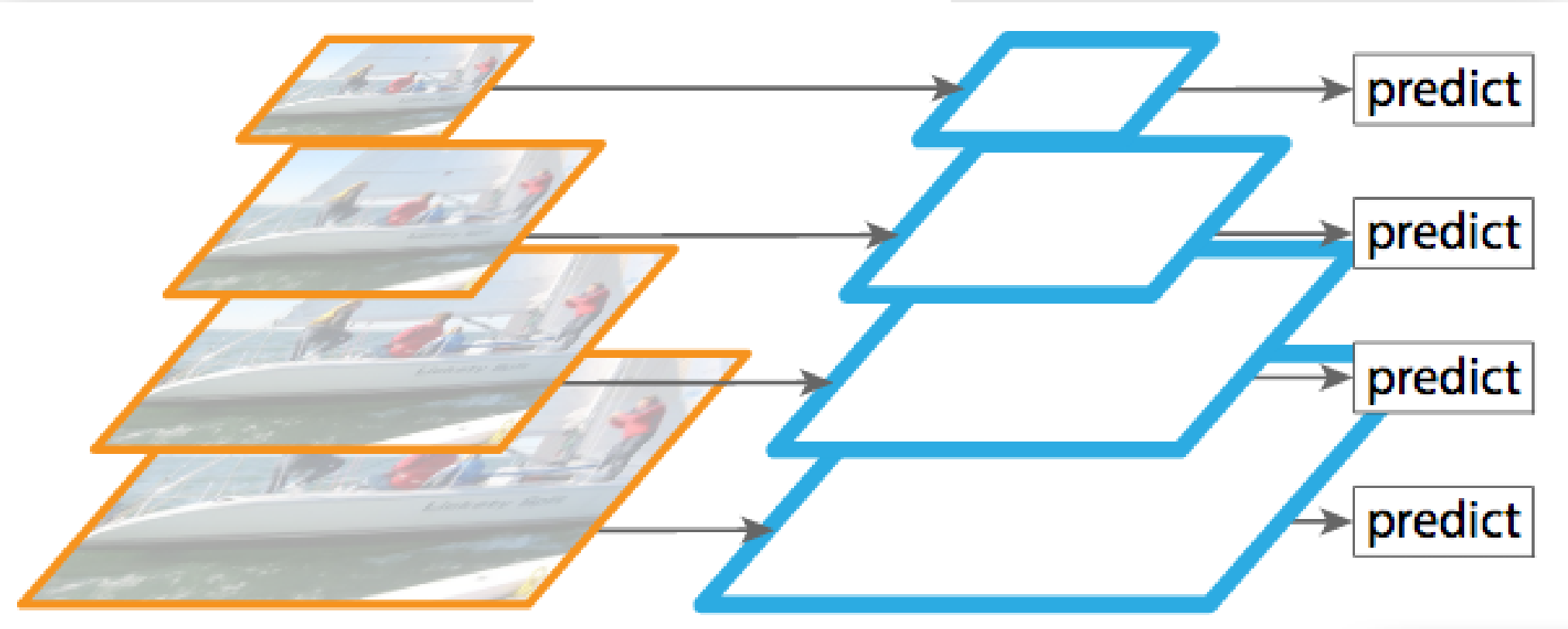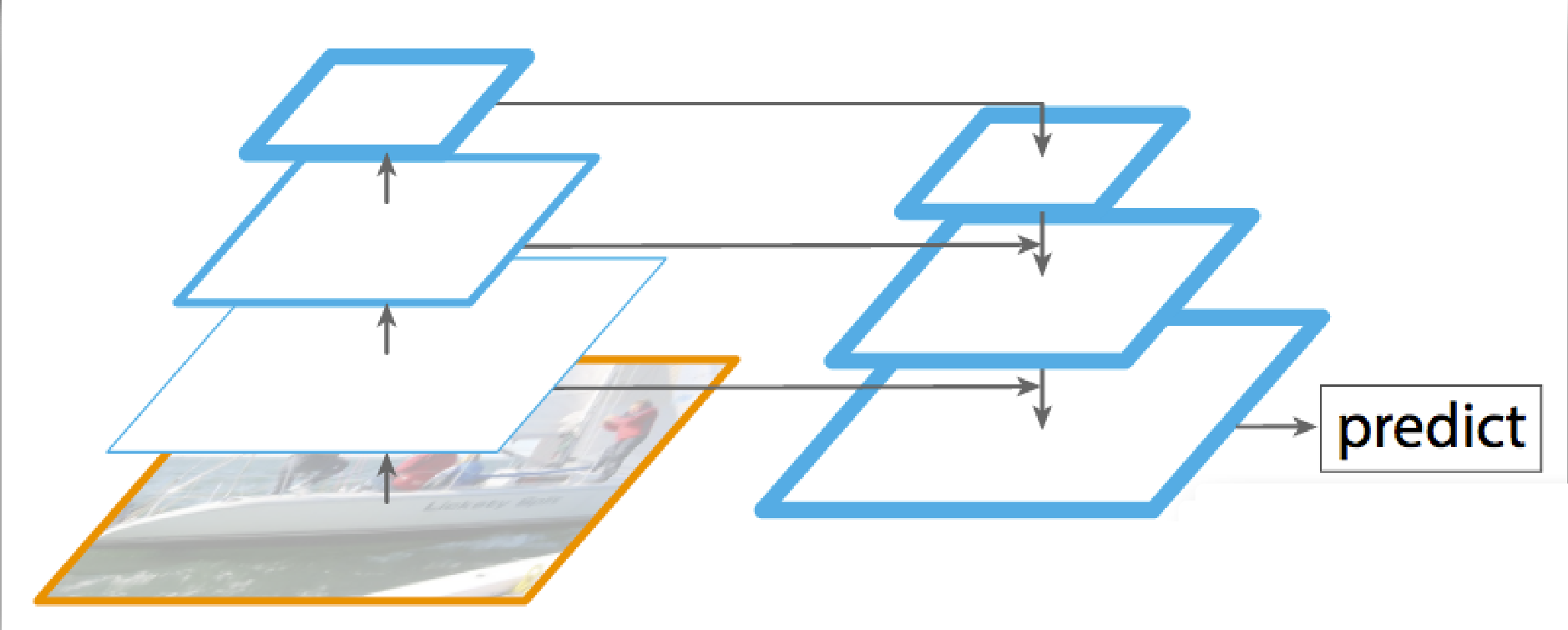
We can use a feature pyramid network to resize our feature map to different sizes. We don’t want to down-size the image and then run it through the CNN because then we will have less features. Additionally, we can’t just use the outputs of different layers of the CNN to get different size features because the earlier layers won’t do as good a job of capturing information.
The solution is to add connections that feed information from high level features (from the backbone) to lower level features. Now, all the levels benefit from the backbone, but you still operate at different resolutions. The FPN gives us a set of feature maps of varying spatial resolutions coming out of the backbone network (vs a single feature map).

In the example above, stage 5 of the backbone produces a 7x7 feature map. These features are passed to an object detector. They are also upsampled and combined with features from the stage 4 map (the features from stage 4 are passed through a 1x1 conv first). The object detector is again run at this level and this is repeated for all stages of the network.
For Faster R-CNN, the detector at each level gets its own region proposal network to produce proposals per-level (each RPN operates independently for each level, but uses the same weights). The proposals from all levels are all then combined and passed to a shared second stage (per-region head that predicts classification and bounding box regression).
Feature Pyramid Network vs. Image Pyramid

In an image pyramid, you just resize the raw image to different scales and then make predictions for these different sizes. You aren’t downsizing the image via a network and are instead just downsizing the raw image (and losing information along the way).
Feature Pyramid Network vs. U-Net Architecture

In an U-Net Architecture, you just predict at the final layer of the decoder. In a FPN, you have a corresponding prediction for each stage in the backbone. Additionally, you have a 1x1 conv between the layers in the backbone and the features you make predictions on (vs. just having an additive skip connection in the U-Net Architecture).